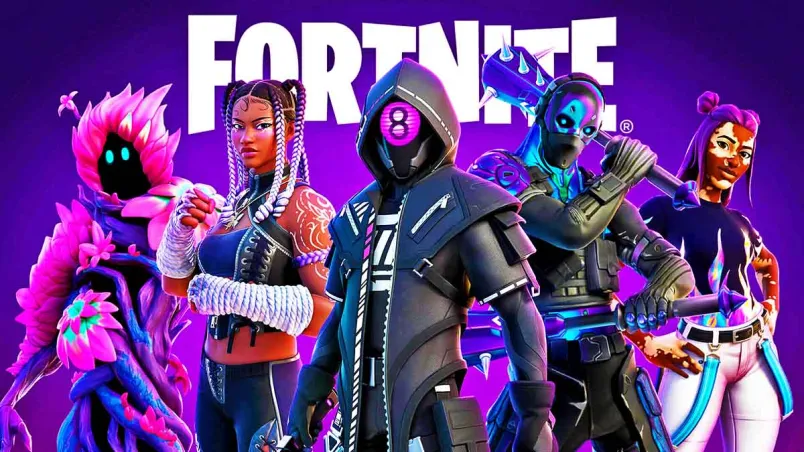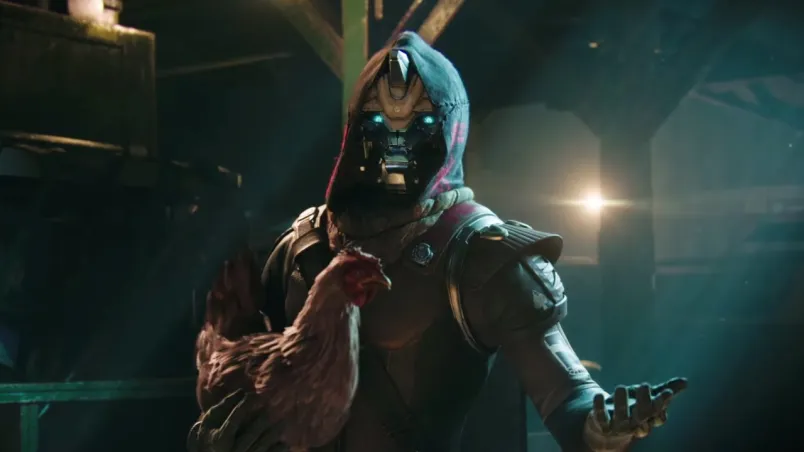
University of Bolton, Deane Road, Bolton. BL3 5AB
Tel:
Email:


“At the University of Bolton, we take great pride in providing a quality, supportive learning environment for our students.”
Professor George E Holmes DL | President & Vice Chancellor
“...tutors are very supportive and you’re not just a student ID number, at this university you are an individual with a name.”
Ellisse Vernon | BSc (Hons) Adult Nursing
Back to menu
Back to menu
Study with an Off-Campus Partner
Back to menu
Back to menu
University of Bolton, why we are the right choice
Location - Bolton, Greater Manchester

03/05/2024
Rebecca Mayhew, Bolton University
Growth of the videogame industry has been rapid in recent years; evolution of technology and the greater integration of games into popular culture means that more people are interacting with videogames than ever before (Cheah et. al., 2021). With so many games now being released, particularly in the digital market, a more creative approach toward securing revenue has been required, leading to a multitude of business models (Cheah et. al., 2021). The ‘Games as a Service’ (GaaS) model is one such approach to find prominence in this climate, as the industry appears to be deviating from the traditional ‘shipping’ of complete boxed games and toward provision of ongoing service to players (Dubois & Weststar, 2022).
Alongside the development of new business approaches, the role of narrative in videogames has also been consistently evolving (Bateman, 2021). There have always been “unique and compelling storytelling elements that separate games from other entertainment forms.” (Skolnick, 2014, p. 149). More recently, the isolation of quarantine during the Covid-19 pandemic highlighted the value of videogame narrative’s ability to offer escapism (Prinsen & Schofield, 2021). Additionally, press reports only this month on the success of videogame adaptations released on streaming services (Khomami, 2024) suggest a newfound appreciation for their worlds, characters and stories.

Figure 1: The recent Fallout TV series brings the world from the videogame series to a new audience (Fallout, 2024).
One question raised by the parallel evolution of these two elements is how they have impacted, and will continue to impact, one another. This is likely to present both challenge and opportunity to modern game writers and narrative designers. Traditionally, storytelling is built on the premise of structure; a clear beginning, middle and end, which give order to a number of key events (Price, 2018). Videogames already present significant ‘problems’ in this regard when it comes to telling cohesive and coherent stories; the ‘unknown’ of the player and how they will interact with the game world (Bateman, 2021), and the need to have story, difficulty and player progression align, allowing the player to feel their own skill develops alongside that of their character (Suckling & Walton, 2017). The narratives of games adopting a GaaS approach face the additional difficulty of how to provide players with a believable and engaging story which effectively never ends, or at least continues for as long as feasibly possible.
Arguably the most prominent and successful example of GaaS implementation to date is Fortnite (Epic Games, 2017-2023), which generated an estimated 5.5 to 5.8 billion in revenue in 2023, and over 20 billion across its lifetime in US dollars (Mercado, 2024). Though its main appeal for many players does not lie in its narrative elements (Carter et. al, 2020), Fortnite is set in a world where it is possible for different ‘realities’ to collide, creating destruction and allowing for the introduction of unique characters and aesthetics for each of its ‘seasons’. This draws on the approach of creating ‘rules’ for a fictional world which accommodate the constant introduction of new content; so long as such content is in keeping with the fictional reality of the game, and the ‘rules’ are applied consistently, believability is maintained for the player (Huessner et. al., date).

Figure 2: Fortnite (Epic Games, 2017-present) uses a narrative of many realities to explain character and world variations.
Genshin Impact is an example of a GaaS game with stronger focus on story and characters, which reportedly generated 59.4 million US Dollars in revenue in January 2024 alone (Statista, 2024). The main protagonist, known as The Traveller, is separated from their twin at the outset of the story. Taking on this role, the player must embark upon a journey across many worlds in order to find their lost sibling, meeting and potentially recruiting many and varied companion characters along the way. Though it is possible to play for free, the game allows players to spend money in order to unlock and progress characters more quickly. Its narrative facilitates the ongoing addition of new content using a similar method to Fortnite, appearing to signify a trend amongst GaaS titles of building provision for variation into their fictional setting. It is also evident that both games employ the method of a repeatable story ‘loop’. In Genshin Impact’s case, this involves the player character repeatedly visiting new worlds to uncover additional aspects of the story.
Though the approaches outlined above successfully incorporate GaaS into the stories of their respective games, they do present an issue with regard to quality storytelling. Without a clear idea of when the story’s end will take place, structure becomes problematic, and players may not feel the same satisfaction as from a well-crafted story built around the established paradigm of final resolution of a main conflict (Price, 2018). This is where games with an initially released and purchased ‘core’ experience with the later addition of downloadable content (DLC) perhaps have an advantage, with the ability to tell a structured story and expand on this later. Although such games may not be considered the purest form of GaaS, due to still utilising a ‘complete and ship’ model, this approach similarly allows continued revenue and extension of the game’s total earning potential.
Destiny 2 (Bungie, 2019-present) adopts the above strategy, periodically releasing expansion packs for an additional charge which supplement the original game’s story while also adding substantial new gameplay content. A potential advantage of this approach is that feedback from fans can be incorporated into the creative process, informing decisions on story direction and focus. For example, the game’s 2014 Forsaken (Bungie) DLC focused on Cayde-6, a popular character with fans. The spread of content across time can also potentially draw players back in after a hiatus from the game, as they will often be naturally motivated to complete an already familiar game (Zachow, 2023).

Figure 3: Cayde-6, a popular character, has appeared in DLC as well as the core game of Destiny 2 (Bungie, 2019-present).
As the videogame industry continues to grow, both narrative and GaaS models are likely to play a significant role. Whether creating ‘endless’ stories, or expanding to tell new ones, developers will aim to ensure that ongoing content remains appealing without damaging the integrity of their fictional game worlds, which players may already be invested in. With careful design, it appears possible for these two aspects to be successfully combined, potentially allowing gamers to enjoy their favourite worlds, stories and characters for longer than ever before possible.
Bateman, C. (2021) Game writing. New York, NY: Bloomsbury Academic.
Carter, M., Moore, K., Mavoa, J., Horst, H. & gaspard, l. 2020, Situating the Appeal of Fortnite Within Children’s Changing Play Cultures, Games and culture, vol. 15, no. 4, pp. 453-471.
Cheah, I., Shimul, A.S. & Phau, I. 2022, Motivations of playing digital games: A review and research agenda, Psychology & marketing, vol. 39, no. 5, pp. 937-950.
Destiny 2 (2019-present). Multi-platform [Game]. Bungie:Bellvue.
Dubois, L. & Weststar, J. 2022, Games-as-a-service: Conflicted identities on the new front-line of video game development, New media & society, vol. 24, no. 10, pp. 2332-2353.
Fallout, Series 1. (2024) [TV Programme] Produced by H. Phillips, G. Sandhu, C. Whelan. Seattle: Amazon Prime Video. April 2024.
Fortnite (2017-present). Multi-platform [Game]. Epic Games: Carey.
Heussner, T. (2018) The game narrative toolbox, 1st edn, Focal: Abingdon.
Khomami, N. (2024) Success of Fallout proves video game adaptations have gone mainstream. The Guardian. [Online] 19 April. Available from: https://www.theguardian.com/tv-and-radio/2024/apr/19/success-of-fallout-proves-video-game-adaptations-have-gone-mainstream. [Accessed 29 April 2024].
Mercado, D. (2024) Epic Games Statistics (2024): Revenue, Growth, Player Count, and More [Online] Available from: https://www.skillademia.com/statistics/epic-games-statistics/. [Accessed 29 April 2024].
Price, B. (2018) Classical storytelling and contemporary screenwriting: Aristotle and the modern scriptwriter, 1st edn, Routledge, Abingdon, Oxon;New York, NY.
Prinsen, E. and Schofield, D. (2021) Video game escapism during quarantine, Computer and Information Science, 14(4), p. 36.
Skolnick, E. 2014, Video game storytelling: what every developer needs to know about narrative techniques, Watson-Guptill, Berkeley.
Suckling, M. & Walton, M. (2017) Video Game Writing: From Macro to Micro, 2nd ed, Bloomfield: Chesham.
Zachow, A. 2023, Patterns and Psychology of Video Game Monetization, ProQuest Dissertations Publishing.